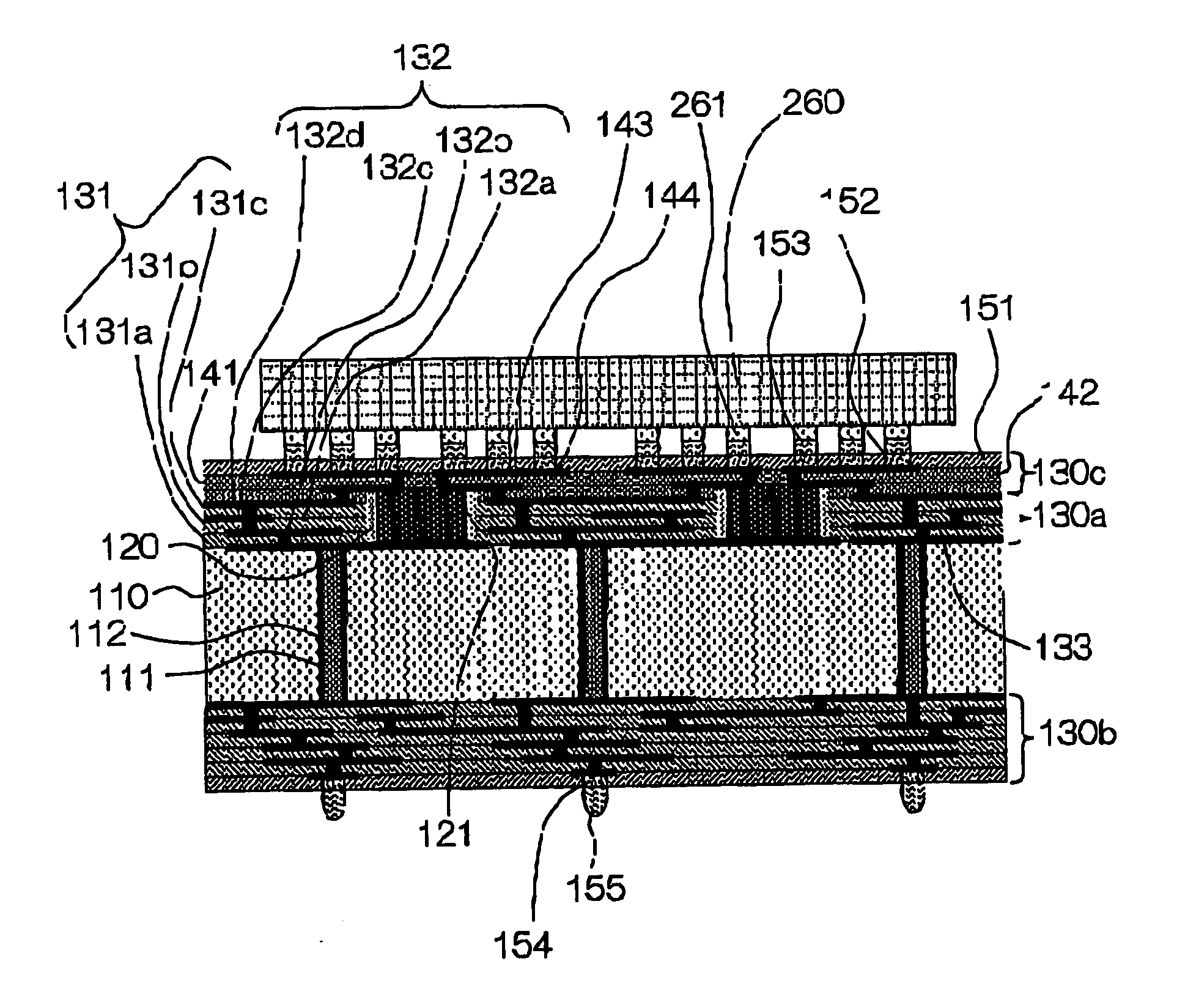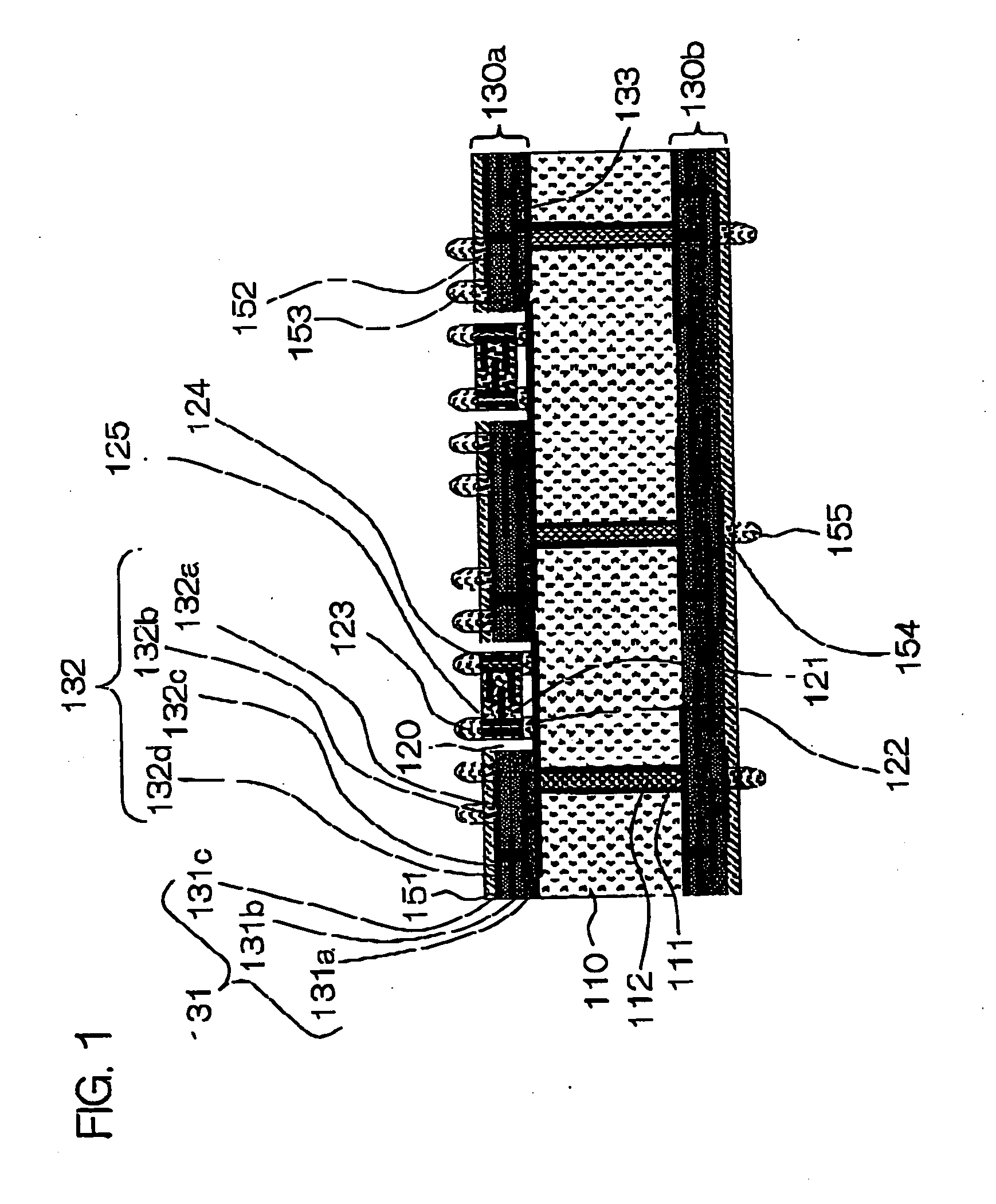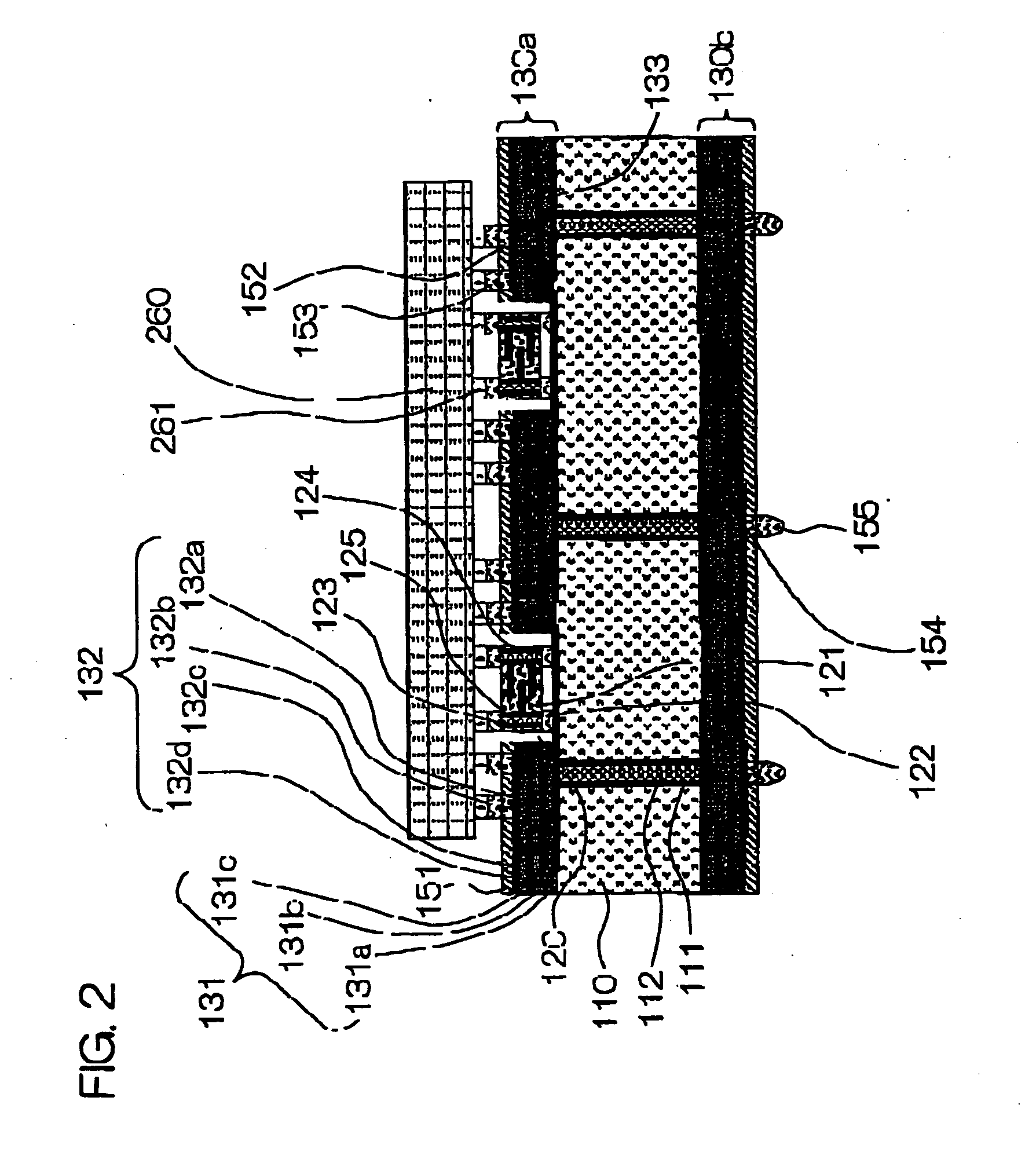Wiring board and semiconductor device
a semiconductor device and wire technology, applied in the field of wire devices, can solve the problems of insufficient capacitance, insufficient wiring distance, and difficulty in maintaining power supply potential and ground potential stably, and achieve the effects of low resistance, insufficient machining accuracy, and low inductan
- Summary
- Abstract
- Description
- Claims
- Application Information
AI Technical Summary
Benefits of technology
Problems solved by technology
Method used
Image
Examples
example 1
[0093] The wiring board shown in FIGS. 1 and 2 was produced. The production process was as follows.
[0094] (1) A glass epoxy resin-impregnated base material was used for the core substrate 110. Prior to the formation of the build-up layer 130a, the core substrate 110 was provided with holes for the through-holes by drilling or laser machining. It is also possible to carry out desmear by a plasma treatment when the need arises.
[0095] (2) Subsequently, a copper-plated film was formed on the surface of the core substrate 110 by electroless copper plating. Then, the whole of the core substrate 110 was dipped in the electroless copper plating liquid to further form a copper-plated film using the foregoing copper-plated film as the electrode.
[0096] Subsequently, a photosensitive dry film is attached to the surface of the aforementioned copper-plated film, which was then subjected to masked exposure followed by development with an alkali solution so that a resist-plated film with a prede...
example 2
[0115] Subsequently, the wiring board shown in FIGS. 3 and 4 was produced. The production process thereof will be described referring to FIGS. 3 and 4. The production steps that are the same as the steps in the example of FIGS. 1 and 2 are omitted as far as possible, and the steps characteristic of the present example 2 are described in detail.
[0116] First, the core substrate 110 having holes for through-holes was fabricated as in the example 1. Then, the wiring conductor layer 132a comprising a copper film and the through-hole interior surface wiring layers 111 were formed in the surface of the core substrate 110. Then, the surface of the copper film and the surfaces of the through-hole 111 lands were roughened, and a resin filler was injected into the through-holes 112.
[0117] The wiring conductor layer 132a functions also as stopper layer for the laser machining for cavity formation described later. Any of the wiring conductor layers 132 that are hereinafter successively stacked...
example 3
[0132] Subsequently, the wiring board shown in FIGS. 5, 6 and 7 was produced. The production process thereof will be described. The production steps that are the same as the steps in the example of FIGS. 1 to 4 are omitted as far as possible, and the steps characteristic of the present example 3 are described in detail.
[0133] Referring to FIG. 5, the core substrate 110 having holes for through-holes was fabricated. Then, the wiring conductor layer 132a comprising a copper film formed on the surface of the core substrate 110 and the through-hole interior surface wiring layers 111 were formed. Then, the surface of the copper film and the surfaces of the through-hole lands were roughened, and a resin filler was injected into the through-holes 112.
[0134] The wiring conductor layer 132a functions also as stopper layer during the laser machining for cavity formation as described later. Any of the wiring conductor layers 132 that are hereinafter successively stacked may be used as the st...
PUM
 Login to View More
Login to View More Abstract
Description
Claims
Application Information
 Login to View More
Login to View More - R&D
- Intellectual Property
- Life Sciences
- Materials
- Tech Scout
- Unparalleled Data Quality
- Higher Quality Content
- 60% Fewer Hallucinations
Browse by: Latest US Patents, China's latest patents, Technical Efficacy Thesaurus, Application Domain, Technology Topic, Popular Technical Reports.
© 2025 PatSnap. All rights reserved.Legal|Privacy policy|Modern Slavery Act Transparency Statement|Sitemap|About US| Contact US: help@patsnap.com



